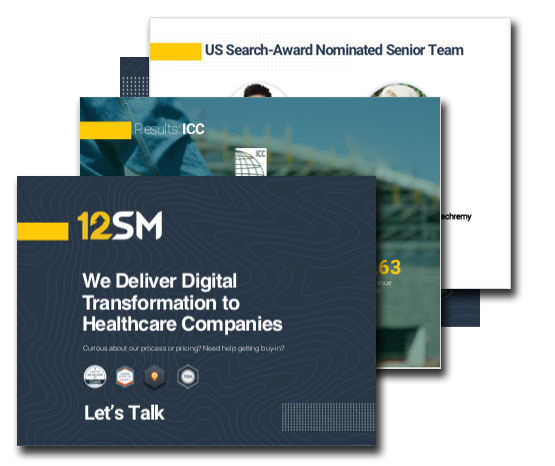One of the biggest challenges in optimizing your healthcare business for digital-first patients is figuring out how to get those patients to take action and engage with your website.
That’s what we want to focus on in this article.
Digital health systems will help you meet consumer expectations going forward, but they’re moot if potential patients aren’t scheduling appointments or purchasing your products and services.
Let’s talk about it.
What is Digital-First Healthcare?
Digital-first healthcare consumers expect quite a bit from your business. They’re mostly interested in digital communication, telehealth services and convenience.
These expectations can be met in many ways, including:
- Allowing patients to schedule appointments online.
- Conducting appointments that don’t require physical examinations via voice and video chats.
- Using text messages and emails in place of traditional mail.
- Improving the search and find-a-provider functionalities on your site.
- Implementing online payments for medical bills.
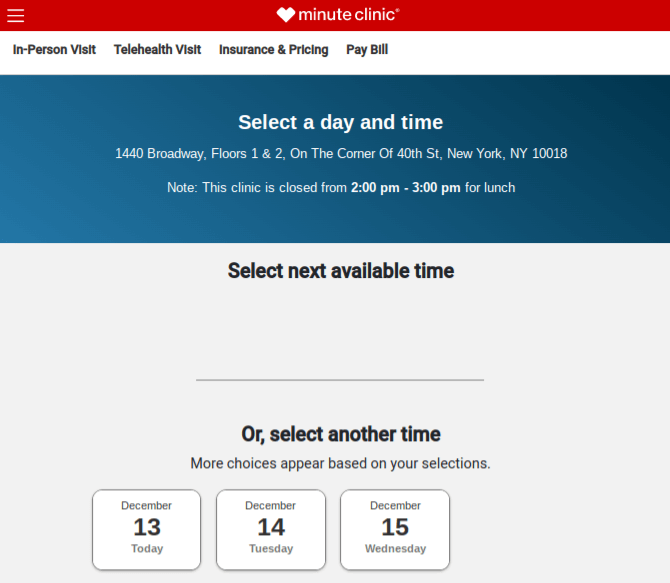
Source: CVA Minute Clinic
Optimizing your business practice for digital-first healthcare and making your website more accessible, especially for disabled individuals, are a must going forward.
In fact, 39% of consumers strongly agree a positive digital experience has a major impact on the patient experience in the healthcare industry, according to Accenture’s Digital Health Consumer Survey for 2020.
As for negative digital experiences? The same study found that 50% strongly agree a bad digital experience ruins their entire experience with a healthcare provider.
If you don’t meet the needs of patients in the digital age while other healthcare businesses do, you’re going to fall behind.
As you go about implementing digital healthcare systems and telehealth services, be sure you are also looking for ways to increase patient engagement. You can still fall behind if the competition winds up implementing these new systems more effectively than you.
Why is Patient Engagement Important for Digital-First Healthcare?
According to a study conducted by Unbounce in 2020, the average conversion rate for the medical services industry is 7.2%, the lowest of all industries tested.
This means that for every 1,000 people who visit your website, only 72 will become patients or email subscribers.
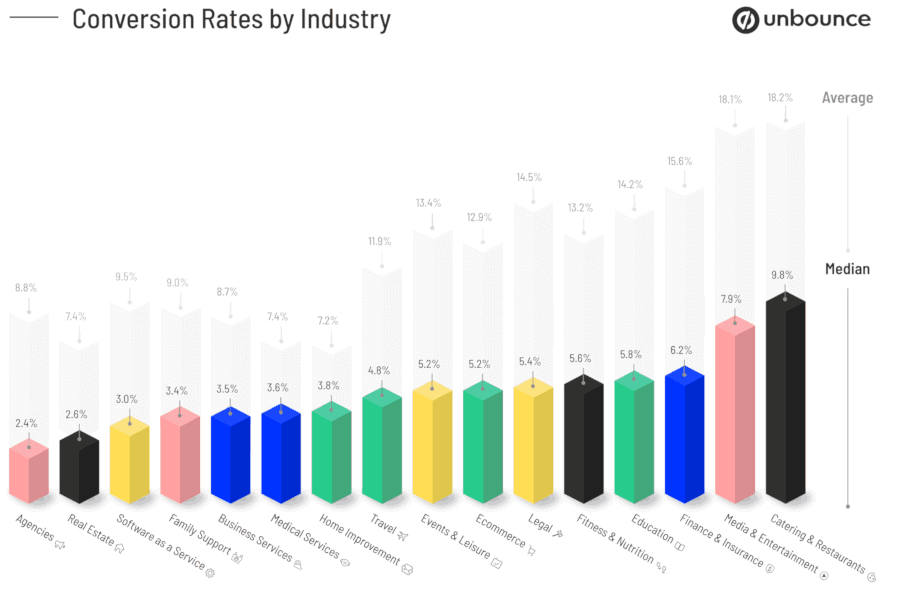
Source: Unbounce
Conversion rate is something you’ll need to take into account if you’re going to venture into the world of digital-first healthcare.
Businesses with higher conversion rates spend less on marketing as each campaign brings in a sufficient amount of new customers. In short, they require fewer campaigns to meet their business goals.
If you want to spend less on new patient acquisitions, you’re going to need to increase your conversion rates. One of the most effective ways to do this is by increasing patient engagement on your site.
Even the best marketing campaign can’t make up for low engagement rates. The marketing campaigns you use on social media websites, Google ads and commercials won’t mean much if patients find it difficult to interact with your site or feel they don’t have much of a reason to.
This is something digital health systems can help with, but we have a few additional ways of increasing patient engagement to share with you as well.
5 Ways to Increase Patient Engagement On Your Website
You can easily increase engagement on your healthcare website by implementing the following tactics:
- Use prominent calls to action across your site.
- Create lead magnets for patients.
- Use email marketing effectively.
- Allow patients to schedule appointments without accounts.
- Implement accessibility web design elements.
Method #1: Use Prominent Calls to Action Across Your Site
As a healthcare business, your primary goal is to treat and care for the patients you acquire. With more and more patients moving online, you cannot acquire a decent number of them if they find it difficult to schedule appointments.
The header and footer of your website should have a prominent Schedule button that leads to a page with an online form integrated with patient scheduling software.
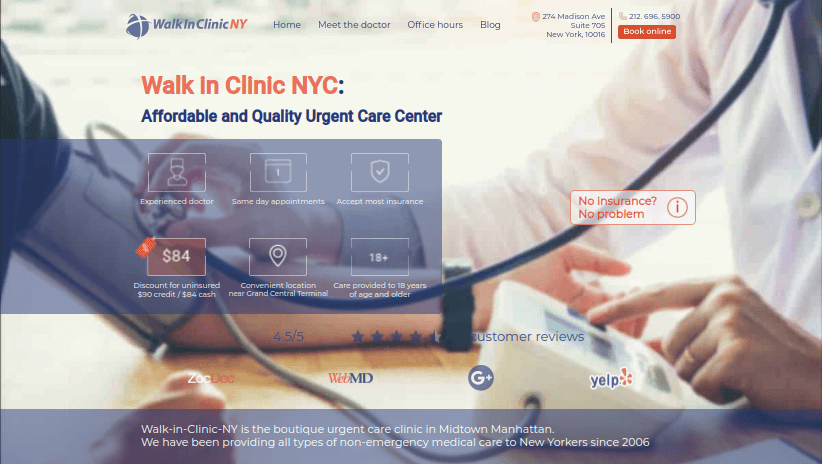
Source: Walk-in Clinic NY
This software is important. Your competitors are implementing online scheduling. You can’t hope to compete if your only form of online scheduling is a request form patients can use to request an appointment from you.
When your developer updates the design of your website, make sure they use a color that contrasts well with the background colors of your header and footer. This ensures patients are able to see your calls to action without needing to search for them.
Add this button in provider search results as well.
You should also place a complete call to action (headline, tagline + button) on your homepage and other relevant pages, such as your About and Services pages.
Use a floating button across your site as well. This should appear in the bottom, right-hand corner of the viewport.
Lastly, place a floating Call button on the mobile version of your website. This should integrate with your customer’s phone call functionality so they don’t need to dial your number if they want to get in touch by phone.
Method #2: Create Lead Magnets for Patients
Not all patients will be ready to schedule appointments when they visit your website. You should capture them as leads for this reason.
Create an email list so they don’t need to create accounts on your site. This allows you to use one of email marketing’s most effective methods for lead acquisition: lead magnets.
A lead magnet is an offer you present to a visitor on your website in exchange for their email address. You promote the offer on your subscription form, though some email marketing campaigns require full landing pages for lead magnets. The subscriber receives the offer via email after they subscribe.
Here are a few lead magnet ideas for acquiring potential patients:
- Discount on first appointment.
- Free consultation or examination.
- Care guides for common ailments you treat.
- Case studies featuring real patients you’ve treated.
- Healthcare reports.
- Checklists or cheat sheets/resource lists.
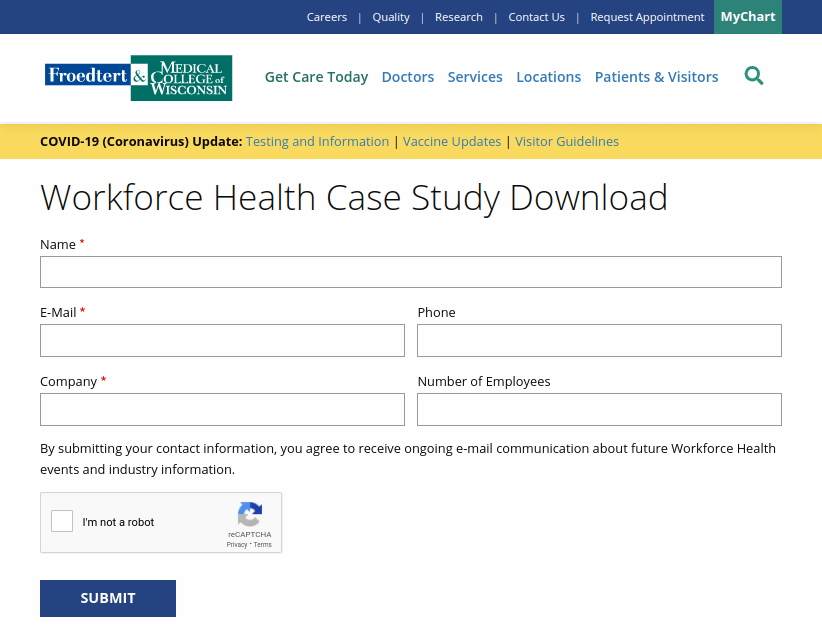
Source: Froedtert
With lead magnets, patients are more likely to engage with your site even when they don’t need to book appointments.
Method #3: Use Email Marketing Effectively
So, what do you do with all of those leads once you’ve collected them? In other words, how do you get leads to interact with your website?
The best way to do this is by segmenting and tagging subscribers by age, gender and ailment. This will allow you to send targeted content to each segment.
For instance, tagging subscribers as being over 50 allows you to send reminders for routine checkups recommended for that age group.
You can also share your latest posts with subscribers. Your blog post layout should have the same calls to action for scheduling appointments and purchasing services.
Subscribers will see these calls to action every time they read a new post of yours.
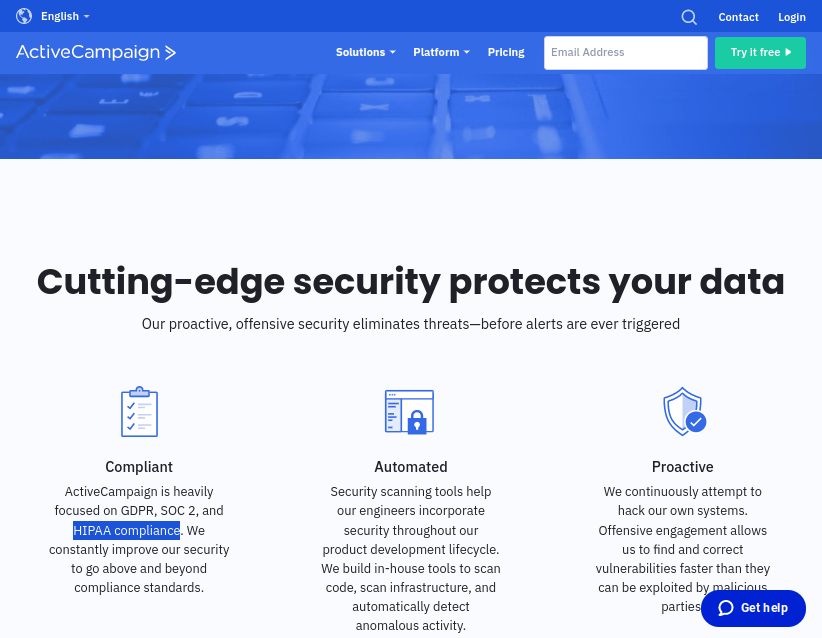
Source: ActiveCampaign HIPPA Compliant
ActiveCampaign is a fantastic email marketing service for healthcare businesses. They’re HIPAA compliant and offer segments, tags and marketing automations.
Method #4: Allow Patients to Schedule Appointments without Accounts
Every part of the patient journey needs to be optimized. This includes weeding out points at which visitors are most likely to leave your website and not convert.
Let’s say a customer clicks on your call to action on an ad of yours they found on Facebook. They like what they see on your website and decide to click the Schedule an Appointment button displayed prominently all over your site.
But then they’re taken to a page that has nothing but a sign-up form and are advised to create an account if they want to schedule an appointment.
Some patients may go ahead and create accounts. Others, however, may be put off by having to hand over their email addresses to another website and create more passwords they need to remember.
The best solution to this problem? Make creating an account an option for convenience purposes but entirely optional as a whole.
Method #5: Implement Accessibility Web Design Elements
Optimizing your website for disabled individuals should be another priority when you implement digital health systems in your business practice.
Over 61 million adults in the United States, or 26% of the adult population, lives with a disability. That’s a lot of business you could be missing out on if your website is not accessible to them.
Fortunately, simple tweaks to your website’s design and code can make all the difference to disabled individuals:
- Use accessible software for scheduling and online payments.
- Make key website functionalities, such as your Schedule an Appointment button, easily accessible when you press the Tab key on a keyboard.
- When you add buttons, ensure the entire button is clickable, not just the text.
- Add descriptive labels to forms. Don’t just use placeholder text.
- Ensure pop-up windows are optimized for screen readers. Users should also be able to navigate through clickable areas on the pop-up window with their Tab key without that navigation cycling back through the main website while the pop-up window is still open.
- Add alt text to images, especially images whose purpose is to help patients learn or understand something better.
Applying these tweaks to your website will increase patient engagement among all patients, especially those who benefit from digital healthcare systems the most.
Final Thoughts
Increasing patient engagement on your healthcare website well enough to get them to take action is tricky but not impossible.
The best thing you can do is consider what benefits you provide to patients. What problems are you solving for them?
Thinking of your marketing strategy in these terms will help you create marketing campaigns and web designs that drive patient action.
To recap on the suggestions we made above, make it easier for customers to schedule appointments by allowing them to schedule online and including prominent calls to action across your website.
Make sure they can’t miss it.
Lastly, be sure to capture visitors as leads so you can work on turning them into patients even if they aren’t ready to schedule appointments, yet.




